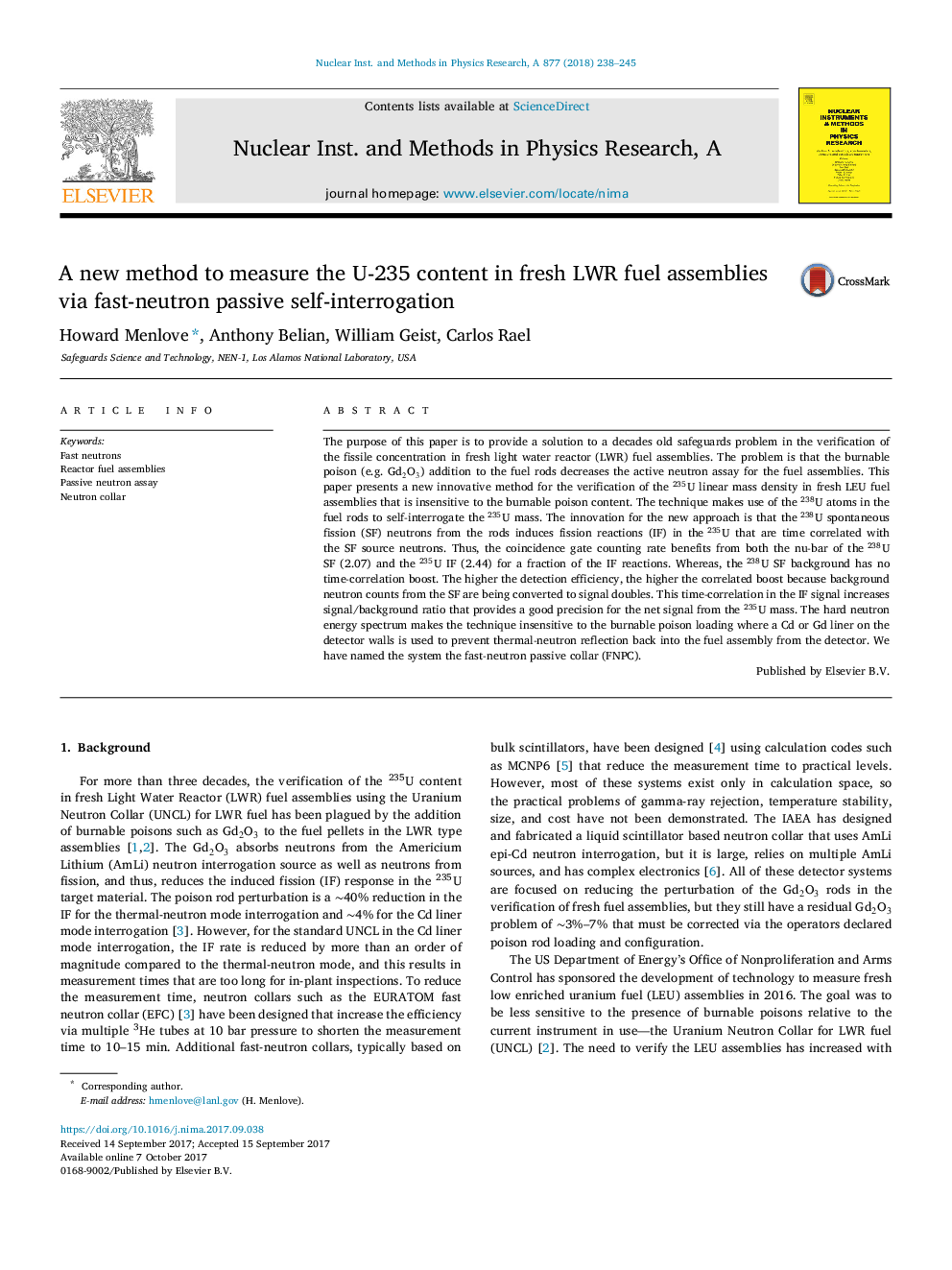| Article ID | Journal | Published Year | Pages | File Type |
|---|---|---|---|---|
| 5492530 | Nuclear Instruments and Methods in Physics Research Section A: Accelerators, Spectrometers, Detectors and Associated Equipment | 2018 | 8 Pages |
Abstract
The purpose of this paper is to provide a solution to a decades old safeguards problem in the verification of the fissile concentration in fresh light water reactor (LWR) fuel assemblies. The problem is that the burnable poison (e.g. Gd2O3) addition to the fuel rods decreases the active neutron assay for the fuel assemblies. This paper presents a new innovative method for the verification of the 235U linear mass density in fresh LEU fuel assemblies that is insensitive to the burnable poison content. The technique makes use of the 238U atoms in the fuel rods to self-interrogate the 235U mass. The innovation for the new approach is that the 238U spontaneous fission (SF) neutrons from the rods induces fission reactions (IF) in the 235U that are time correlated with the SF source neutrons. Thus, the coincidence gate counting rate benefits from both the nu-bar of the 238U SF (2.07) and the 235U IF (2.44) for a fraction of the IF reactions. Whereas, the 238U SF background has no time-correlation boost. The higher the detection efficiency, the higher the correlated boost because background neutron counts from the SF are being converted to signal doubles. This time-correlation in the IF signal increases signal/background ratio that provides a good precision for the net signal from the 235U mass. The hard neutron energy spectrum makes the technique insensitive to the burnable poison loading where a Cd or Gd liner on the detector walls is used to prevent thermal-neutron reflection back into the fuel assembly from the detector. We have named the system the fast-neutron passive collar (FNPC).
Related Topics
Physical Sciences and Engineering
Physics and Astronomy
Instrumentation
Authors
Howard Menlove, Anthony Belian, William Geist, Carlos Rael,
